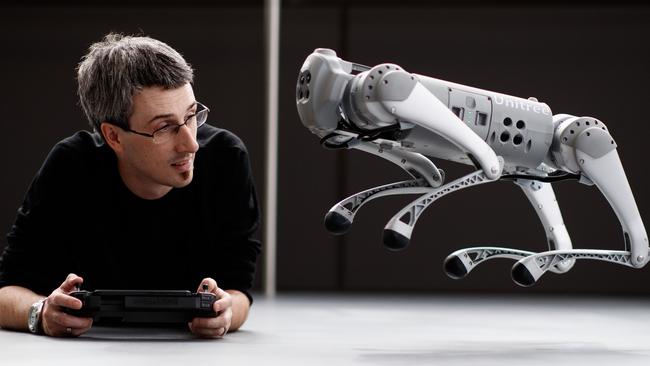Clive the robot ‘dog’ may be able to communicate without wagging his tail
Clive the robot dog is helping researchers understand how he perceives the world – robots like Clive are already being used in search and rescue missions.
SA News
Don't miss out on the headlines from SA News. Followed categories will be added to My News.
He cost UniSA $25,000 and weighs just 13kg – but Clive the robot has some lofty targets during his deployment at Mawson Lakes.
James Walsh, enterprise fellow at the university’s STEM academic unit, says defence, mining, space and utility companies commonly use robots like Clive for remote inspections.
They’re also put to work in search and rescue missions.
At Mawson Lakes, Dr Walsh says Clive will be invaluable in the university’s augmented and virtual reality research, helping people see how he perceives the world.
He hopes their work will come up with ways to help people understand robots like him.
“People have different reactions to quadrupeds like Clive,” Dr Walsh said.
“Some people find him confronting as they don’t know how he sees or perceives them, given that he can act autonomously.
“We want to find a way for Clive to be able to communicate with those around him, so he becomes less of a black box and more of a two-way communication between human and robot.”

Clive has multiple cameras fixed around his body, giving him a 360-degree view and allowing him to recognise objects and people, and eventually, understand human gestures.
The same cameras and sensing equipment can be installed in quadrupeds as those used in aerial drones, and Dr Walsh says quadrupeds may become common at airports where drone use is restricted.
“Clive could do inspections at Adelaide Airport, for example, without the risk of being sucked into a jet engine,” he says.



